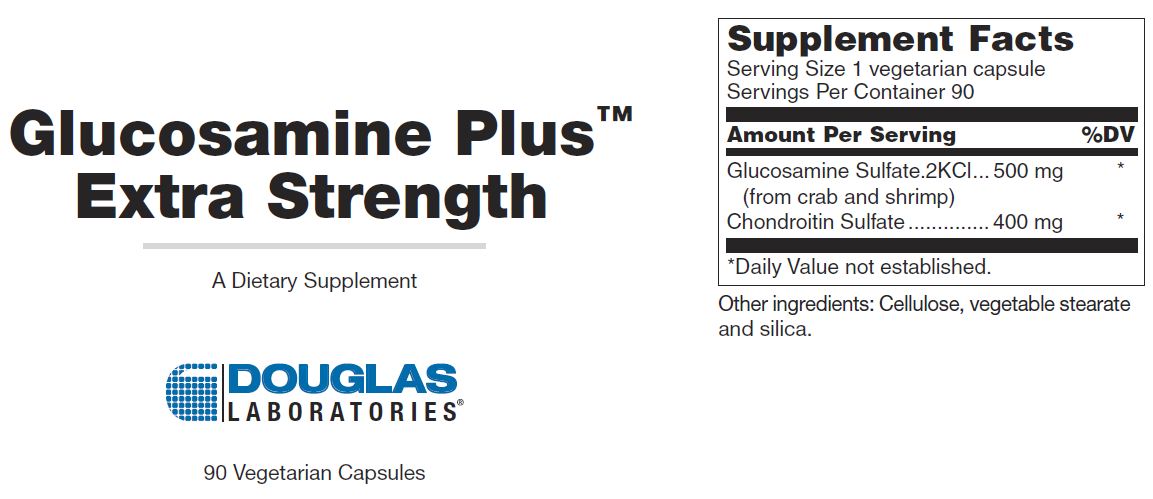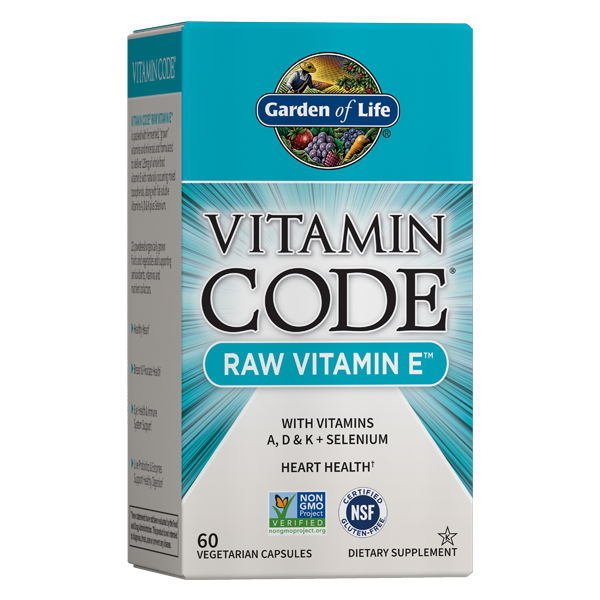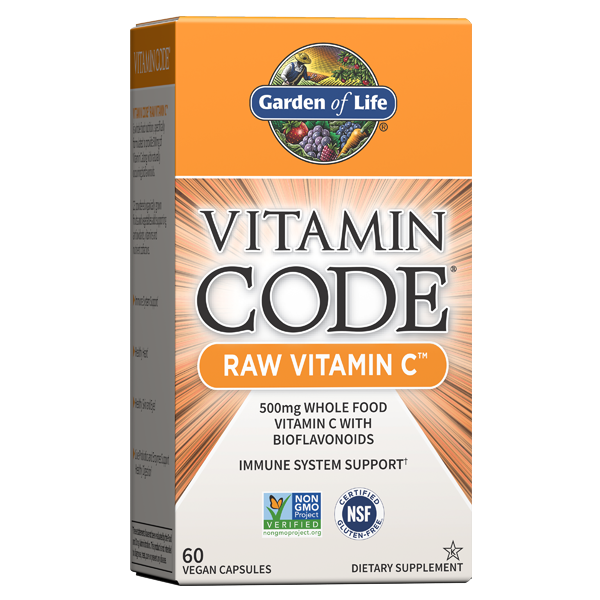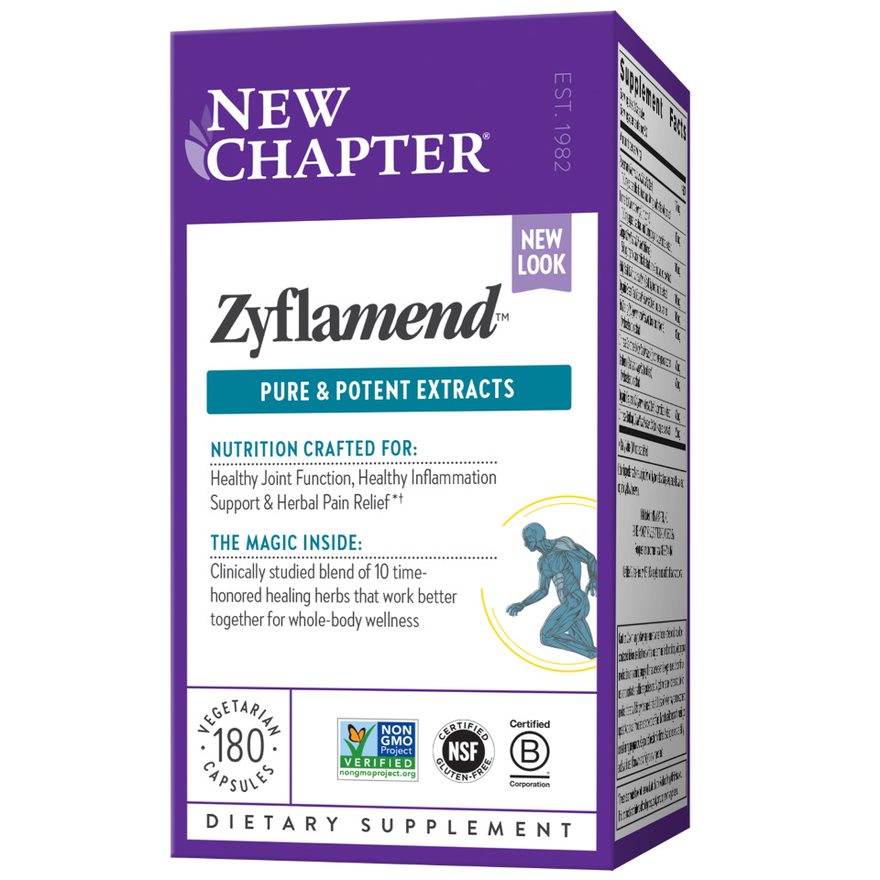Glucosamine Plus Extra Strength capsules, provided by Douglas Laboratories®, contain a synergistic
combination of glucosamine sulfate and chondroitin sulfate. Glucosamine sulfate is a well-absorbed source of
glucosamine, an important precursor for the synthesis and maintenance of connective tissues. Chondroitin
sulfate also supports formation of connective tissues, primarily joint cartilage, and helps protect existing
cartilage. The potassium stabilized form of glucosamine sulfate is used, making these sodium-free products.
Glucosamine is a naturally occurring amino sugar found ubiquitously in glycoproteins and glycosaminoglycans.
Glycosaminoglycans, formerly named mucopolysaccharides, are an integral component of all connective
tissues.Connective tissue, a fibrous type of body tissue, has various functions. It supports and connects
internal organs (ligaments), forms bone, cartilage, and the walls of blood vessels, attaches muscles to bones
(tendons), and replaces tissues that have been damaged following injury.
The two main components of connective tissue are collagen and proteoglycans. Collagen is the strong, fibrous
protein that physically connects our tissues. Proteoglycans are large carbohydrate-rich structures, resembling
a bottlebrush in three-dimensional structure, i.e., a central protein rod with many strings of glucosaminecontaining
glycosaminogly-cans extending outwards. Proteoglycans hold large amounts of water forming a stiff
gel by virtue of their dense negative charges from sulfates. Proteoglycans are linked to collagen fibers to help
form connective tissues, and proteoglycans provide resiliency, load distribution, shock-absorbing, compressive
and lubricating properties to connective tissues and joints.
Glycosaminoglycans and proteoglycans are continuously being formed and replaced in connective tissues.
Remodeling of connective tissues is also continuous, albeit slowly, with turnover half-lives of almost two years
in healthy human joints. Turnover is accelerated in wound healing, arthritic joints, and burns. New synthesis
of glycosaminoglycans has clinical importance in skin during normal wound healing, in bone during fracture
repair and osteoporosis, and in joints. In these instances, glycosaminoglycan synthesis is necessary for
healing, and enhancement of glycosaminoglycan and proteoglycan deposition may improve tissue repair.
Glycosaminoglycans are synthesized primarily by fibroblasts (skin, tendons, ligaments), osteoblasts (bone),
and chondrocytes (cartilage). Thus, the cell’s ability to manufacture glycosaminoglycans and secrete proteoglycans is crucial during any healing or joint disease process.
The availability of glucosamine is the key, rate-limiting step in glycosaminoglycan and proteoglycan synthesis
in all connective tissues, such as skin, bone, cartilage, tendons, and ligaments. Only with sufficient
glucosamine, the synthesis can proceed.
The body has a long metabolic pathway to synthesize a glucosamine derivative, UDP-N-acetylglucosamine,
which is used for glycosaminoglycan synthesis. In addition, exogenous, i.e., dietary, glucosamine serves as
an immediate precursor for glycosaminoglycan synthesis, and also stimulates incorporation of other precursors
into the connective tissue matrix.
Chondroitin sulfate, a glycosaminoglycan formed in the body, is also used for the synthesis and maintenance
of connective tissue, primarily within the cartilage matrix. In addition, chondroitin sulfate protects existing
cartilage by reducing water loss from the matrix and by inhibiting the enzymatic breakdown of the cartilage.
The overlapping activities as well as functional differences of glucosamine and chondroitin sulfate offer several
advantages for combined supplementation. Although glucosamine is a precursor for chondroitin synthesis, this
process requires large amounts of metabolic energy. Dietary preformed chondroitin sulfate spares the use of
glucosamine for this purpose. Instead glucosamine can be used for formation of other important
glycosaminoglycans and proteoglycans. When adequate chondroitin sulfate is thus available to help protect
tissues from premature breakdown, glucosamine can more readily stimulate synthesis of healthy new tissue.
Glucosamine is almost universally found in small amounts in most foods.
However, bioavailability of glucosamine from foods is largely unknown.
Bioavailability of oral glucosamine sulfate is excellent. It is absorbed intact, and utilized very quickly by all
tissues, including connective tissues. Chondroitin sulfate is found in most animal tissues. Orally ingested
chondroitin sulfate is also well absorbed and distributed to tissues.
In summary, glucosamine sulfate is a well documented, highly effective source of glucosamine for
glycosaminoglycan and proteoglycan synthesis in all connective tissues. Chondroitin sulfate is an excellent
source of n-acetylgalactoaminoglycan for synthesis and protection of proteoglycans associated with cartilage
tissues.
Glucosamine Plus Extra Strength capsules may be a useful nutritional adjunct for individuals who wish to
support the body’s connective tissues, such as skin, tendons, ligaments, bone, and cartilage.

* These statements have not been evaluated by the Food and Drug Administration. This product is not intended to diagnose, treat, cure, or prevent any disease.
This product was added to our catalog on Sunday 01 June, 2014.





